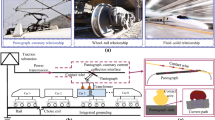Abstract
Reliability of a power system is generally designated as a measure of the ability of the system to provide customers with adequate and constant supply. Power system failure have adverse effects and become a great concern for important large scale industries in South Korea such as semiconductors, steel and chemicals which require a high quality, stable power supply. In South Korea, nearly 80% of transmission system failures are caused by either natural eventualities such as lightning strikes or failure of insulators. Ageing assets pose significant challenges for utilities. Moisture with high temperature, fluctuation in temperature, contamination and electric stress accelerates aging in suspension insulators. The primary goal for the utility is to utilize the full life of an asset, but ageing increases the probability of deterioration and failure of equipment. The average age of vital assets, is estimated to be more than 35 years. In South Korea near about 1,223,538 porcelain insulators are reported to be in functional state. Among them only 65.19% of insulators are reported to be in operative state over 35 years. Insulators demand only 5–8% of installation costs. However, it demands more than 50% of maintenance costs. Thus, deterioration of insulator enhances capital expenditure and decrease returns on the asset base. Therefore, insulators should possess excellent electrical aging resistance to prevent deterioration of insulators. Korea Electric Power Corporation (KEPCO), largest power generation and distribution utility in South Korea utilize porcelain for almost all suspension insulators employed in transmission lines. Porcelain insulators are usually employed in transmission system as they are cost-effective and possess near about 30 to 60 years of lifespan. Lifetime evaluation of porcelain insulators in overhead transmission line is absolutely challenging, owing to aging process. This work highlights investigation of various failures of suspension type porcelain insulators, influencing factors responsible for degradation in lifetime and deterioration of suspension type insulators, various laboratory test methods available for evaluation of insulators employed in overhead transmission lines.
Similar content being viewed by others
Change history
26 December 2019
The article Deterioration of Porcelain Insulators Utilized in Overhead, written by Simpy Sanyal, Fawad Aslam, Taeyong Kim, Seongho Jeon, Youn‑Jung Lee, Junsin Yi, In‑Hyuk Choi, Ju‑Am Son and Ja‑Bin Koo was originally published electronically on the publisher’s internet portal (currently SpringerLink) on 19 September 2019 with open access.
References
W.K. Lee, I.H. Choi, K.Y. Shin, K.C. Hwang, S.W. Han, Trans. Electr. Electron. Mater. 9, 147 (2008). https://doi.org/10.4313/TEEM.2008.9.4.147
I.H. Choi, T.K. Kim, Y.B. Yoon, T. Kim, H.T.T. Nguyen, J. Yi, Trans. Electr. Electron. Mater. 19, 188 (2018). https://doi.org/10.1007/s42341-018-0027-7
S.W. Han, H.G. Cho, K.H. Park, D.I. Lee, I.H. Choi, J. Korean Inst. Electr. Electron. Mater. Eng. 16, 842 (2003). https://doi.org/10.4313/JKEM.2003.16.9.842
W.M. Carty, U. Senapati, J. Am. Ceram. Soc. 81, 3–20 (1998). https://doi.org/10.1111/j.1151-2916.1998.tb02290.x
Visual Inspection of Porcelain and Glass Disc Insulators, Project 3002005628, Electric Power Research. Institute Report, November 2015
K. Hamano, Z. Nakagawa, M. Hasegawa, J. Ceram. Soc. Jpn. 100, 1066 (1992). https://doi.org/10.2109/jcersj.100.1066
M. Amin, M. Akbar, M. Salman, Sci. China Ser. E-Tech. Sci. 50, 697 (2007). https://doi.org/10.1007/s11431-007-0053-x
L. Mattyasovszky-Zsolnay, J. Am. Ceram. Soc. 40, 299 (1957). https://doi.org/10.1111/j.1151-2916.1957.tb12626.x
G. Gralik, A.L. Chinelatto, A.S.A. Chinelatto, Cerâmica 60, 471 (2014). https://doi.org/10.1590/S0366-69132014000400004
G. Blaise, W.J. Sarjeant, Electrical Aging and Breakdown in Dielectric Materials (Academic Press, New York, 1999), p. 29
P.W. Olupot, S. Jonsson, J.K. Byaruhanga, Int. J. Chem. Mol. Nucl. Mater. Metall. Eng. 7, 267 (2013)
W. Chen, W. Wang, Q. Xia, B. Luo, L. Li, Energies 5, 2594 (2012). https://doi.org/10.3390/en5072594
K. Morita, Y. Susuki, H. Nozaki, IEEE Trans. Power Del. 12, 850 (1997)
S.W. Han, I.H. Choi, D.I. Lee, in Proceedings Electrical Insulation Conference and Electrical Manufacturing Expo (Nashville, USA, 2007). https://doi.org/10.1109/EEIC.2007.4562601
N.A.B. Thazali, Ph.D. Investigations of ageing mechanism and electrical withstand performances of the field aged 132 kV PMU Skudai’s ceramic post insulator. (Universiti Tun Hussien Onn Malaysia, Johor, 2013), p. 13
J. Zheng, Q. Yu, X. Chen, in Proceedings of 2nd International Conference on properties and Applications of Properties and Applications of Dielectric Materials (Beijing, China, 1988). p. 16. https://doi.org/10.1109/ICPADM.1988.38320
S.W. Han, I.H. Choi, D.I. Lee, in Proceedings of Electrical Insulation Conference and Electrical Manufacturing Expo (Nashville, USA, 2007). https://doi.org/10.1109/EEIC.2007.4562601
U. Schichler, E. Kynast, in Proceedings of Presented Originally at Highvolt Kolloquium (Dresden, Germany, 2007)
A. Roula, K. Boudeghdegh, N. Boufafa, Cerâmica 55, 206 (2009). https://doi.org/10.1590/S0366-69132009000200014
M. Amin, M. Salman, Rev. Adv. Mater. Sci. 13, 93 (2006)
S.W. Han, H.G. Cho, I.H. Choi, D.I. Lee, in Proceedings of IEEE International Symposium on Electrical Insulation (Toronto, Canada, 2006), p. 118. https://doi.org/10.1109/ELINSL.2006.1665271
E.L. Brancato, IEEE Trans. Electr. Insul. 13, 308 (1978). https://doi.org/10.1109/TEI.1978.298079
I.H. Choi, J.H. Choi, D.I. Lee, Y.G. Choi, H.G. Cho, S.W. Han, Y.C. Park, J. Korean Inst. Electr. Electron. Mater. Eng. 18, 96 (2005). https://doi.org/10.4313/JKEM.2005.18.1.096
Author information
Authors and Affiliations
Corresponding author
Additional information
Publisher's Note
Springer Nature remains neutral with regard to jurisdictional claims in published maps and institutional affiliations.
The original version of this article was revised due to a retrospective Open Access cancellation.
Rights and permissions
About this article
Cite this article
Sanyal, S., Aslam, F., Kim, T. et al. Deterioration of Porcelain Insulators Utilized in Overhead Transmission Lines: A Review. Trans. Electr. Electron. Mater. 21, 16–21 (2020). https://doi.org/10.1007/s42341-019-00143-5
Received:
Revised:
Accepted:
Published:
Issue Date:
DOI: https://doi.org/10.1007/s42341-019-00143-5









